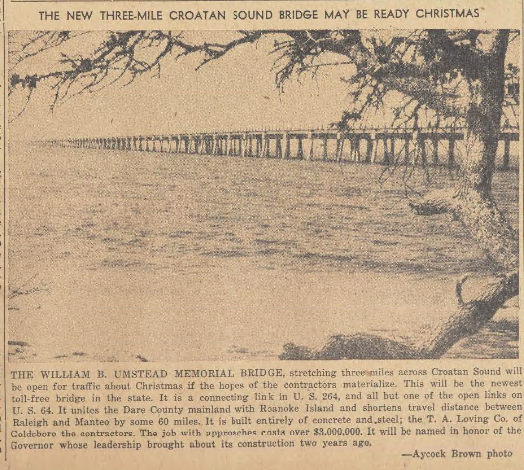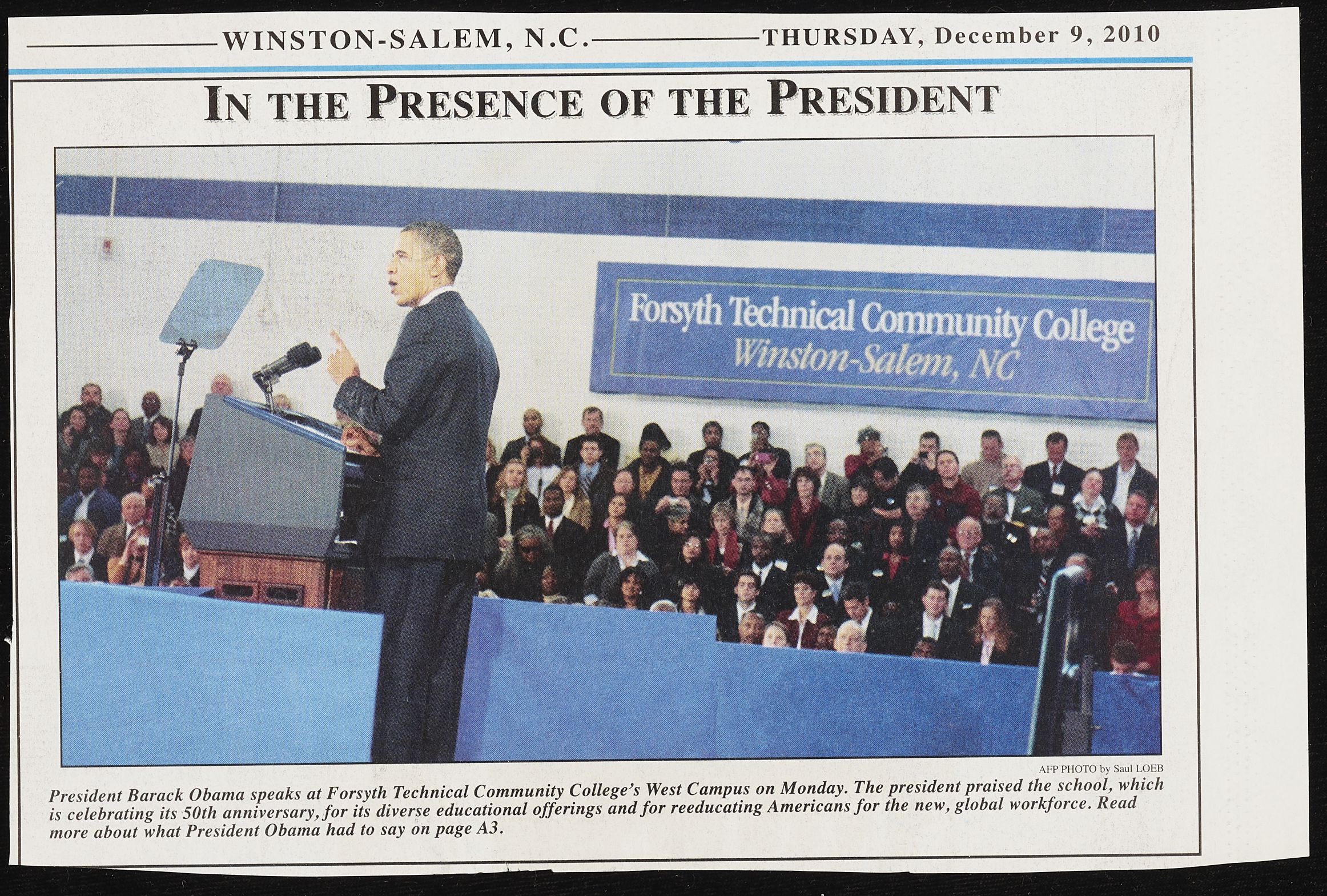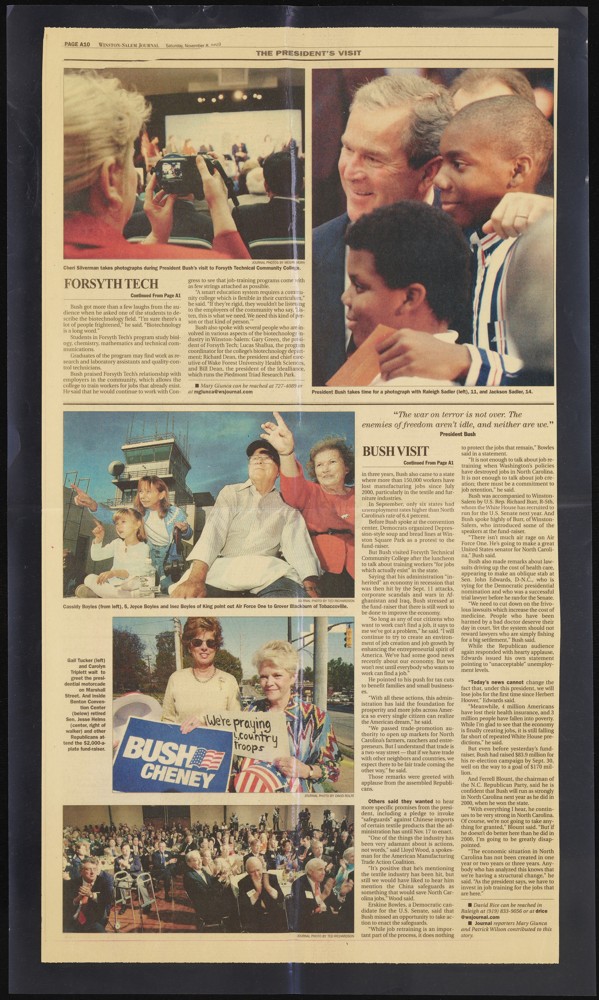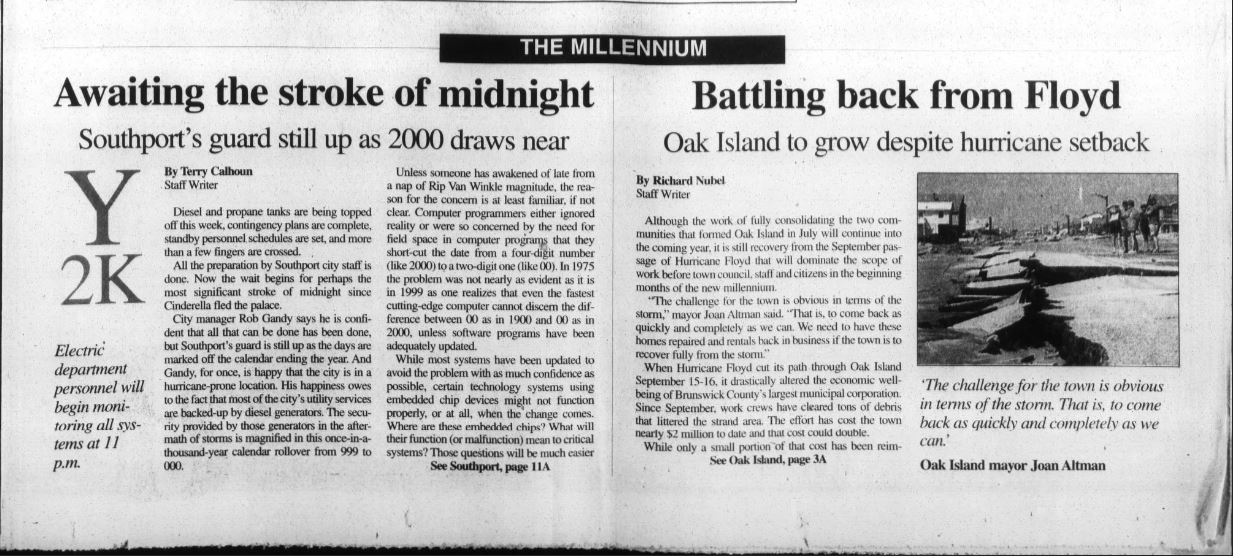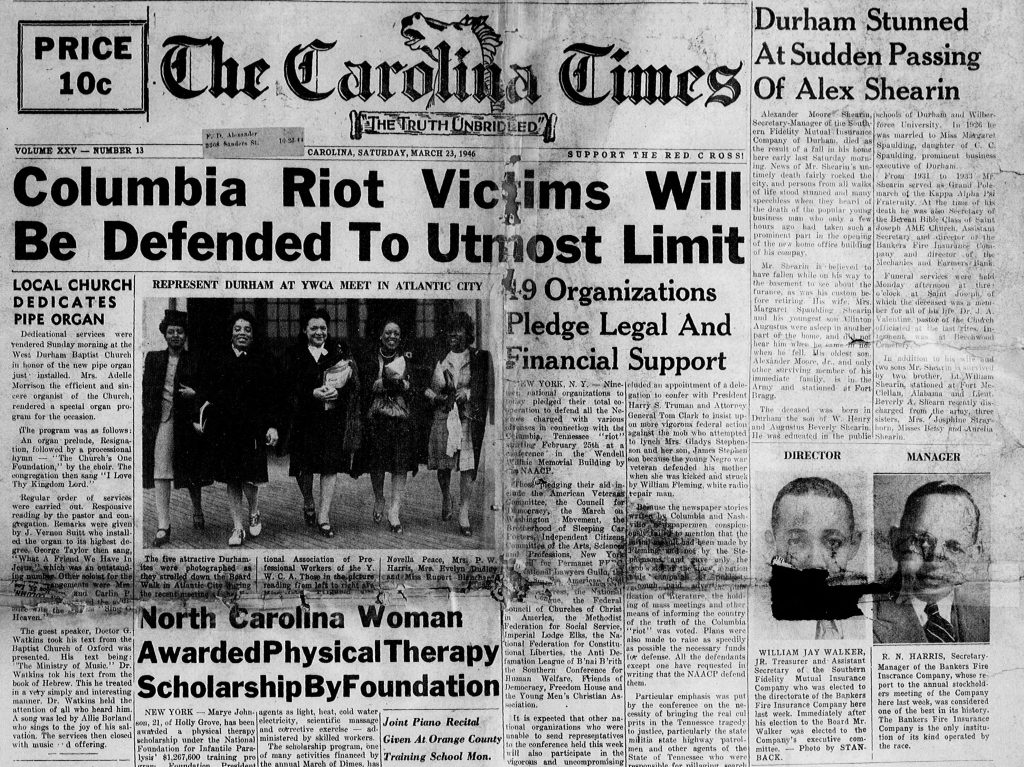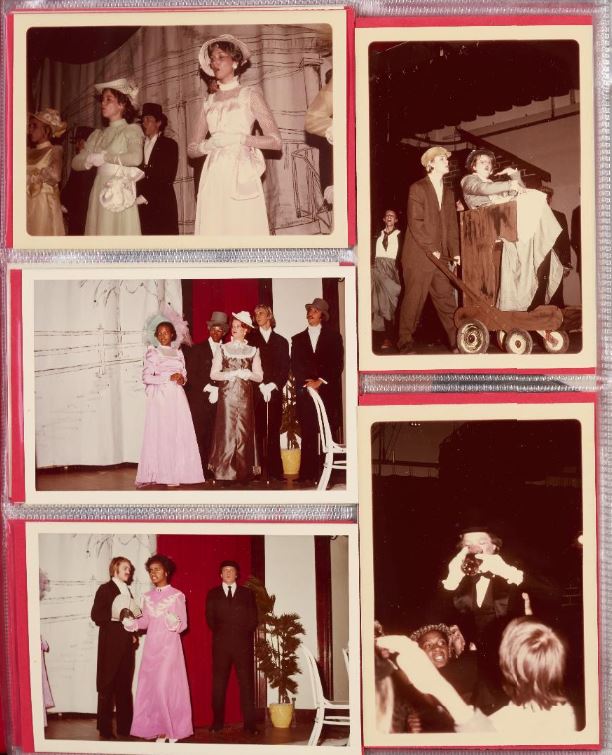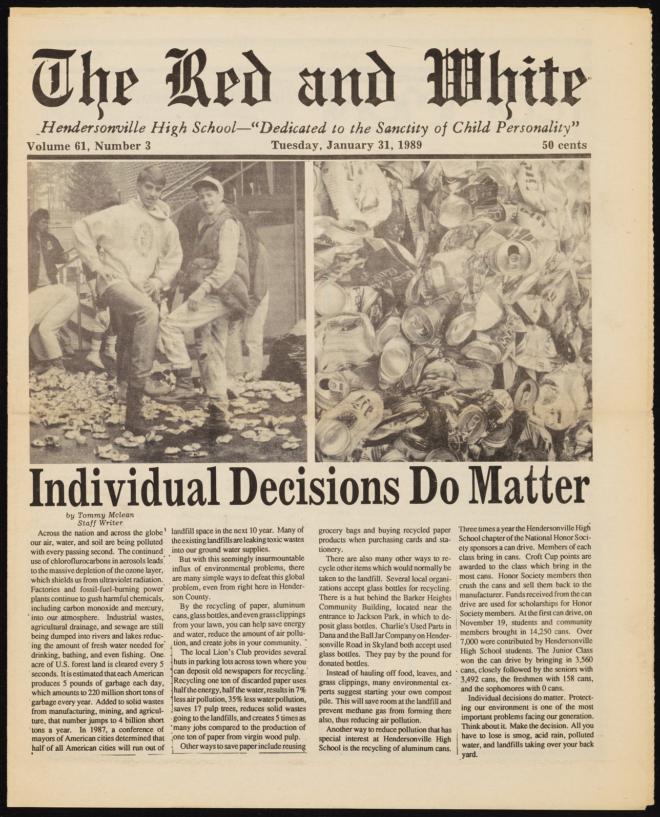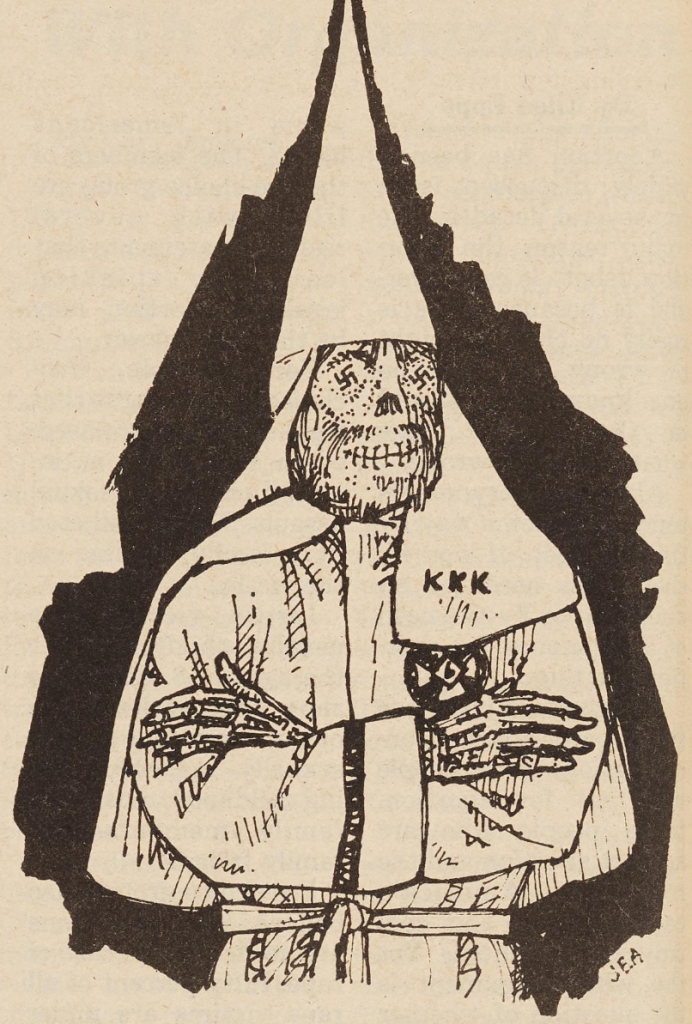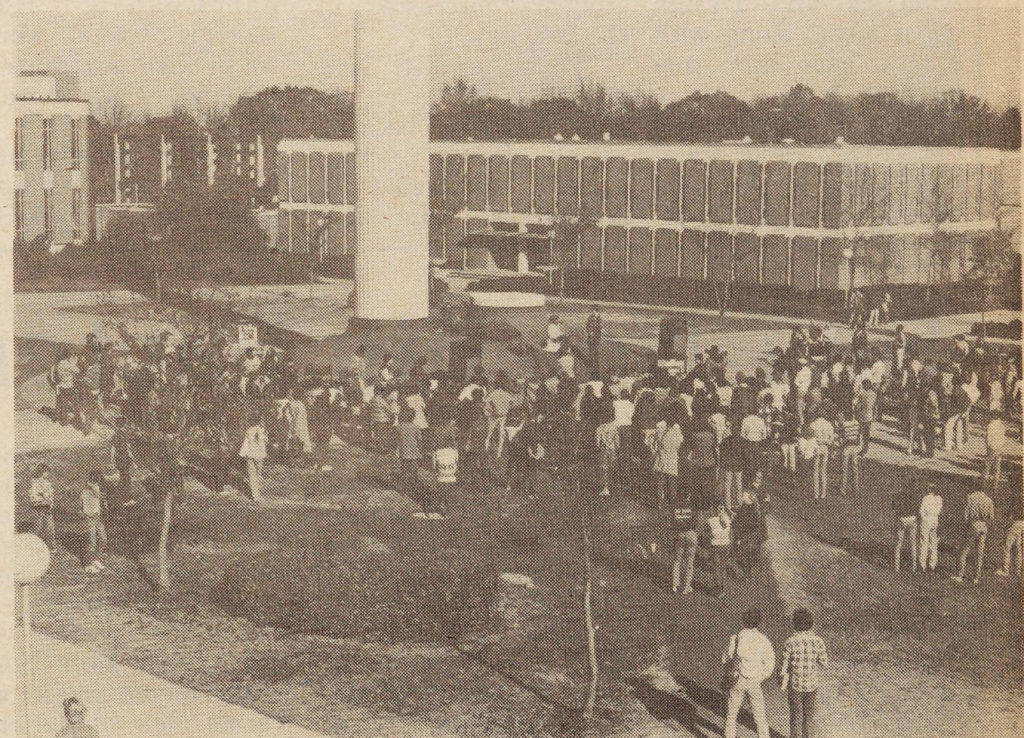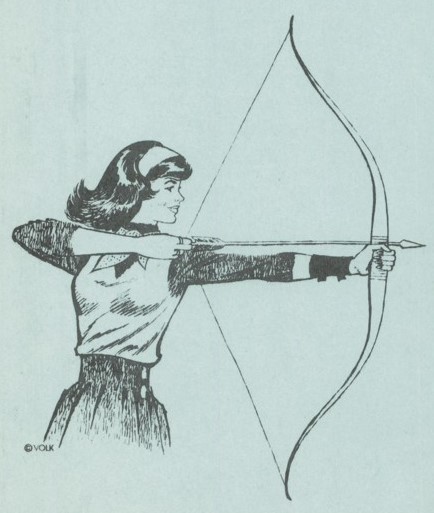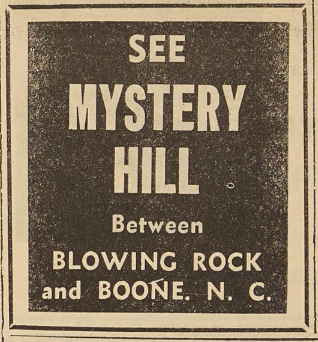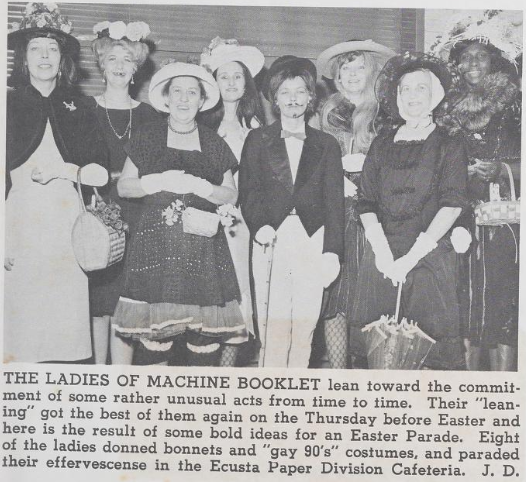Researchers interested in the Outer Banks will be happy to hear that a new batch of 287 newspaper issues has recently been uploaded to DigitalNC! Our partners at the Outer Banks History Center in Manteo, N.C. have contributed this trove of material, and we are excited to make it available digitally. All of the issues date from 1949-1955, providing a detailed picture of coastal North Carolina in the immediate post-war era. Coverage focuses on local issues and events, though these often have wider implications for the whole state. The excerpt below discusses the construction of the Croatan Sound Bridge, a 14,000-foot bridge connecting Roanoke Island and mainland North Carolina still in use today. The photo was taken by Aycock Brown, a photographer and journalist renowned for his devotion to the Outer Banks. His photographs and writings are frequently featured in these pages.
Titles in this batch include The Hyde County Herald out of Swan Quarter, N.C., The Belhaven Pilot out of Belhaven, N.C., and The Coastland Times out of Manteo, N.C. In 1935, Daniel Victor Meekins of Roanoke Island founded The Dare County Times, and in a few years had expanded his printing operation to include The Belhaven Pilot and The Hyde County Herald. The papers were later consolidated under a single title, The Coastland Times. Due to this history, DigitalNC hosts both The Belhaven Pilot and The Hyde County Herald under the standardized title of The Hyde County Herald, available at the link provided. You can view all of the issues of The Coastland Times here, and all of the newspapers on DigitalNC here. To see everything contributed by the Outer Banks History Center, visit their partner page here.
